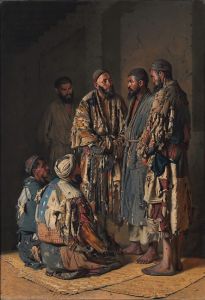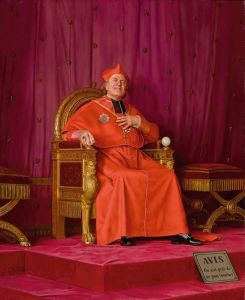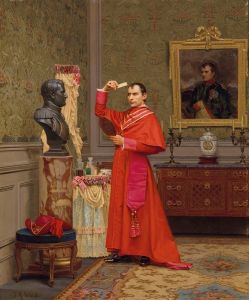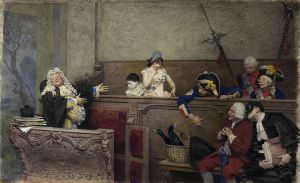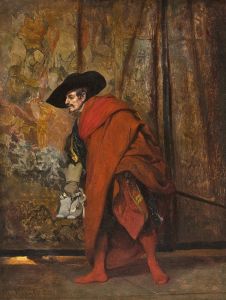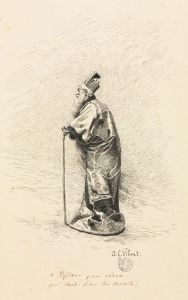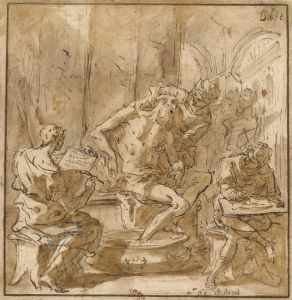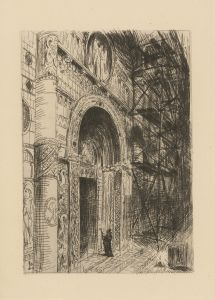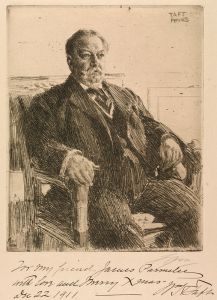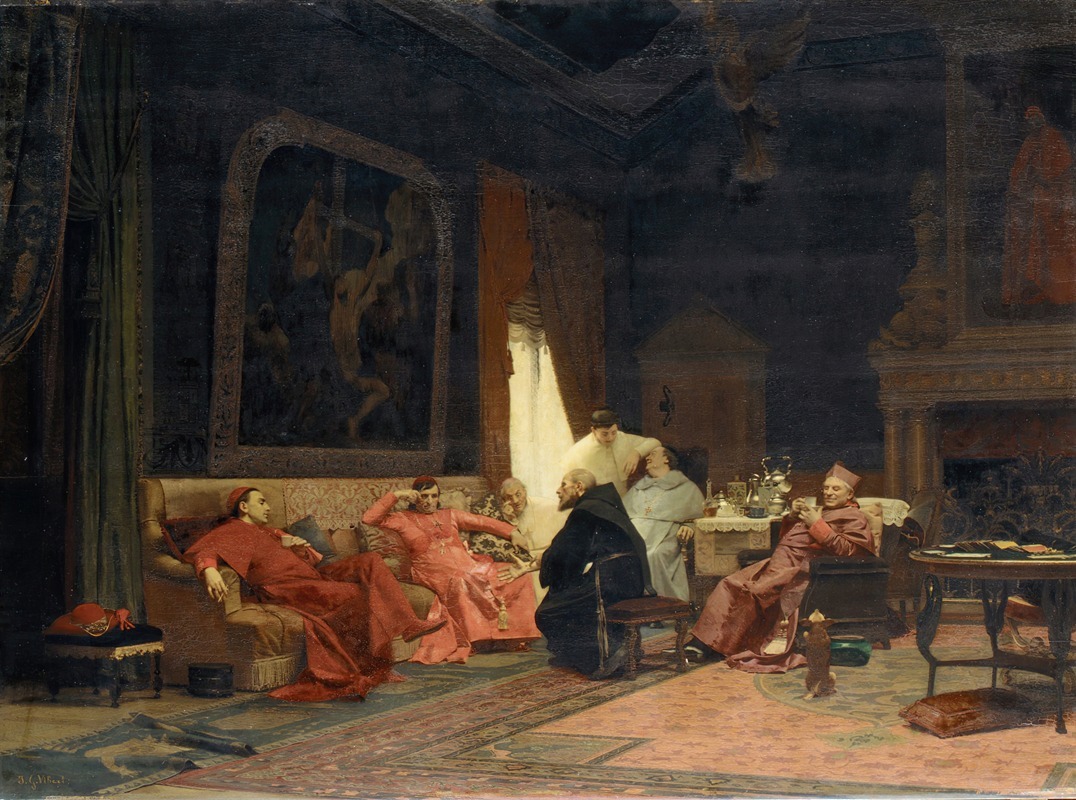
The Missionary’s Adventures
A hand-painted replica of Jehan Georges Vibert’s masterpiece The Missionary’s Adventures, meticulously crafted by professional artists to capture the true essence of the original. Each piece is created with museum-quality canvas and rare mineral pigments, carefully painted by experienced artists with delicate brushstrokes and rich, layered colors to perfectly recreate the texture of the original artwork. Unlike machine-printed reproductions, this hand-painted version brings the painting to life, infused with the artist’s emotions and skill in every stroke. Whether for personal collection or home decoration, it instantly elevates the artistic atmosphere of any space.
Jehan Georges Vibert was a French academic painter known for his satirical and often humorous depictions of clergy and religious themes. Born in Paris on September 30, 1840, Vibert was a student of the École des Beaux-Arts and studied under the tutelage of renowned artists such as François-Édouard Picot and Félix-Joseph Barrias. He became a prominent figure in the art world during the late 19th century, particularly for his genre paintings that often critiqued the Catholic Church and its clergy.
"The Missionary’s Adventures" is one of Vibert's notable works, reflecting his characteristic style and thematic focus. While specific details about the painting's creation and its exact date are not widely documented, it is consistent with Vibert's oeuvre that often portrayed religious figures in humorous or ironic situations. His works were known for their meticulous detail, vibrant colors, and the clever use of narrative to convey a story or critique.
Vibert's paintings, including "The Missionary’s Adventures," typically feature clergy members in various scenarios that highlight human follies and the contradictions within religious institutions. His art often served as a social commentary on the power dynamics and the sometimes hypocritical nature of religious authorities. This approach resonated with audiences of his time, who were familiar with the societal and political tensions surrounding the Church in 19th-century France.
"The Missionary’s Adventures" likely follows this thematic tradition, presenting a scene that invites viewers to reflect on the role and experiences of missionaries. Vibert's ability to blend humor with critique allowed him to engage viewers in a dialogue about the complexities of faith and the human condition. His paintings often included rich details that provided insight into the characters' personalities and the setting, making them not only visually appealing but also intellectually stimulating.
Vibert's work was well-received during his lifetime, and he exhibited regularly at the Paris Salon, where he gained recognition and acclaim. His paintings were popular among collectors, and his reputation extended beyond France, with his works being sought after by international audiences. Despite the satirical nature of his art, Vibert was respected for his technical skill and his ability to capture the nuances of human expression and interaction.
In addition to his painting career, Vibert was also an accomplished writer and playwright, further showcasing his versatility and creative talents. He passed away on July 28, 1902, leaving behind a legacy of art that continues to be appreciated for its wit, craftsmanship, and insightful commentary on society and religion.
While specific information about "The Missionary’s Adventures" may be limited, it remains a testament to Jehan Georges Vibert's unique artistic vision and his contribution to the genre of satirical art. His works continue to be studied and admired for their ability to provoke thought and entertain, reflecting the enduring appeal of his artistic legacy.





